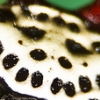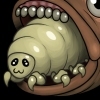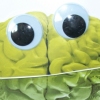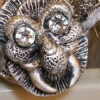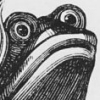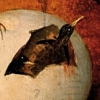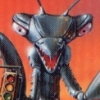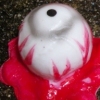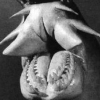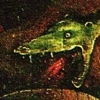Written by Jonathan Wojcik
October 17: HAGFISH DAY!

Get this on a shirt and buttons!
Since 2009, marine biologists have declared a single day out of October to be National Hagfish Day, a time to stop and appreciate the beauty of those creatures deemed ugly, frightening and unappetizing by the vapid and superficial public. Bogleech already does that 365 days a year, but I last devoted an article to hagfish themselves a whopping ten years ago, when I reviewed what was their only known merchandise at the time. I'm still proud of how that one reads from start to finish, but today, we're going to re-review the unique qualities that makes these ancient creatures so special; seventeen facts for the seventeenth of the month!
There's also a new hagfish based monster just added to Mortasheen canon!
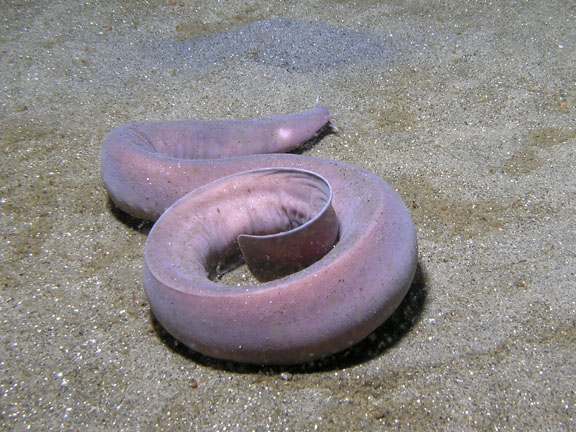

|
Hagfish are ancient marine predators and scavengers of the class Myxini, derived from myxo or "slime." There are over seventy identified species, ranging from shallow coastal waters to the deep abyssal reaches. |
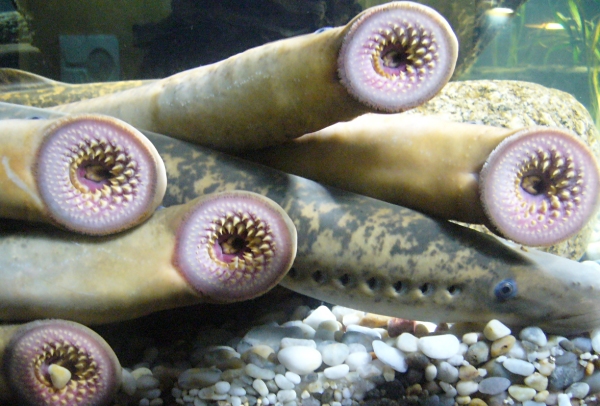

|
Together with the lampreys (shown here), hagfish are the only living representatives of agnatha or "jawless" vertebrates, animals formerly dominating the world's oceans. |
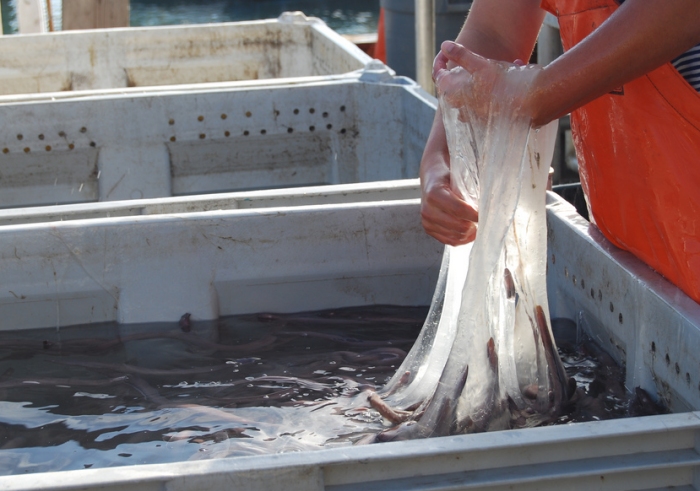

|
Hagfish are most famous among biologists for their incredible slime, secreted instantaneously in large quantities and made up of many long, tough protein strands. In minutes, a single specimen can turn several gallons of water into thick jelly. |
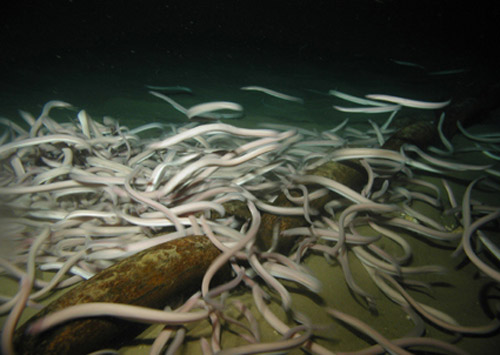

|
Hagfish often prey upon marine worms, mollusks and small crustaceans, but have many special adaptations for scavenging on dead and dying vertebrates, and are perhaps the ocean's most specialized and important corpse-eaters, filling a niche similar to the surface world's vultures and other carrion birds. |

|
A hagfish is the only vertebrate able to tie itself into a knot. By sliding the knot up and down its length, it can clears itself of its own suffocating mucus or give itself leverage to rip flesh from a large body. |

Madame Hagfish from "Spongebob Squarepants"

|
Highly opportunistic, hagfish will often enter the body of an injured or trapped animal and begin to consume them alive from within. Often, their slime may asphyxiate the prey and speed their death. |
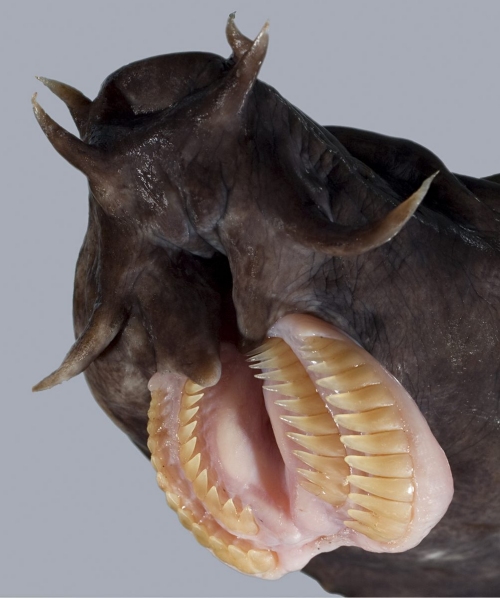

|
What appear to be many smaller fangs are only four long, comb-shaped teeth set in a rasping, cartilaginous pad. The animal's lips open and close vertically. |

|
The slime of a hagfish clogs the gills of attackers so effectively that their few major predators are largely gill-less seabirds and marine mammals. |
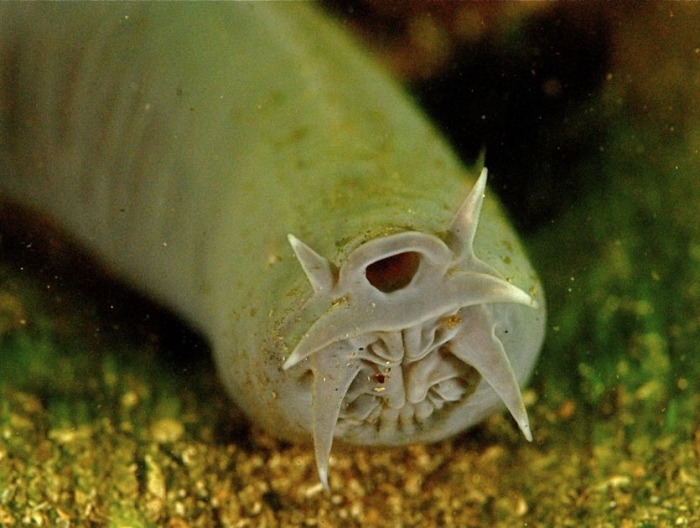
Photo: Stephen Wing

|
A hagfish has a single, large, round and very prominent nostril, easily mistaken for a mouth. It is the only "fish" capable of sneezing, another method to avoid choking to death on its own slime. |
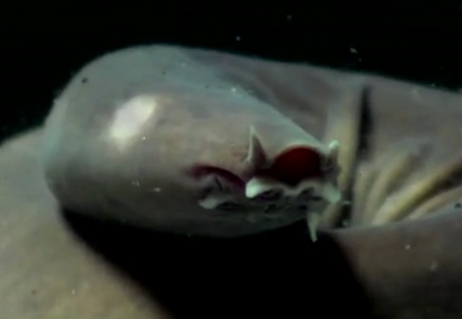

|
Many hagfish are completely blind, while others possess simplistic, light-sensitive eyespots just under the skin, visible as white patches. |
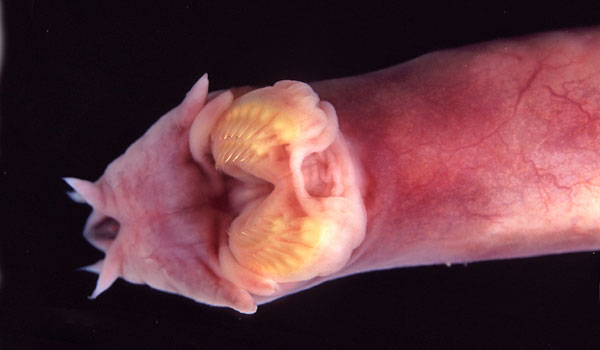

|
A hagfish's slime also serves to lubricate its body as it worms in and out of openings in a large corpse. |
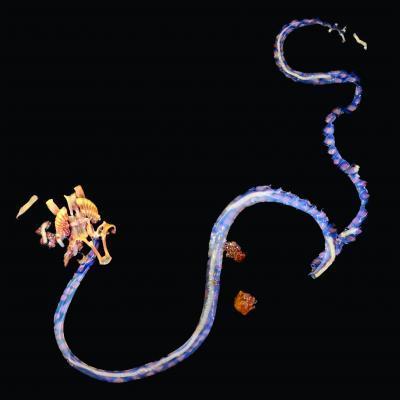

|
The skeleton of a hagfish is one of the most minimal of any vertebrate animal, and comprised entirely of cartilage. |
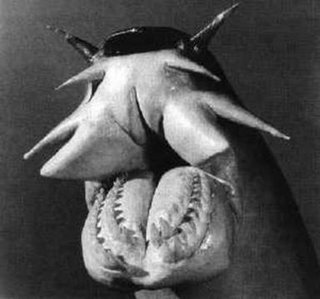

|
Hagfish skin is the traditional source of "eelskin" for wallets and other products. |
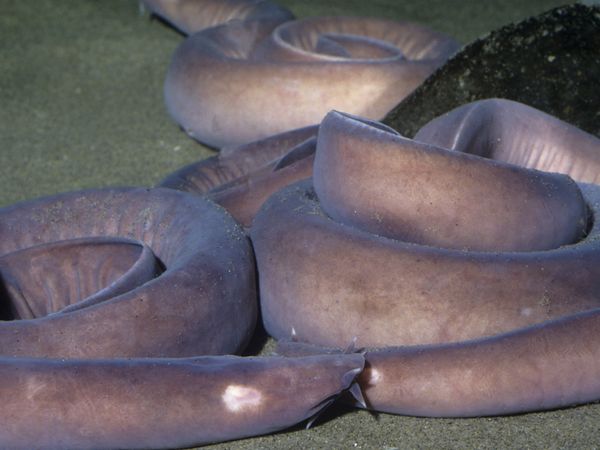

|
Hagfish mating habits are poorly understood. Some species appear to be hermaphrodites, and may even self-fertilize. Other species are known to have hundreds of females to every male. |
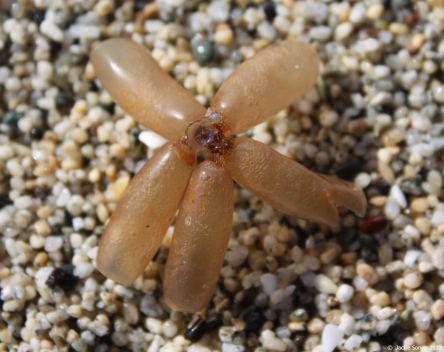

|
Hagfish eggs bear tufts of velcro-like strands at each end, clumping together or even forming long chains. |
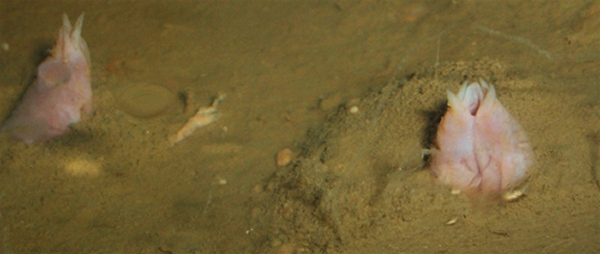

|
At rest, hagfish squeeze themselves into crevices or bury themselves up to the nose in soft sediment, lying in wait until they catch scent of a meal. |
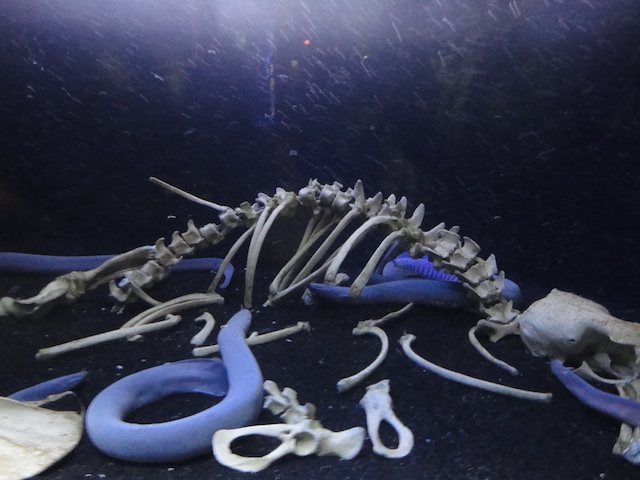

|
Hagfish are among the only vertebrates able to absorb nutrients directly through their skin, not unlike many parasitic worms. This is particularly useful as they wallow in the body cavities of the dead. |
HALLOWEEN 2012 ARCHIVE:


